The first Taiwanese designers to show off a collection at Paris fashion week, Chien Yu-feng (
During a trip back home last year, the duo were introduced to a traditional color tone that was often used in folk customs and they then applied it to their Autumn/Winter 2005 collection in Paris.
The "Taiwan Red" series put the pair in the spotlight and gave them the opportunity of becoming the first Asians to design costumes for the Miss France beauty pageant this year.
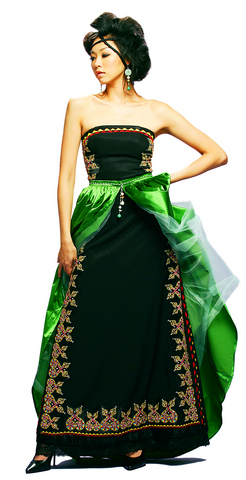
As a country with a long history of colonization by various nations, Taiwan is now an economically and politically independent entity striving to foster its own unique cultural identity.
Like the recent taike (台客) phenomenon, in which a younger generation took pride in the once defamatory term, the promotion of Taiwan Red signifies a renaissance of Taiwanese culture and introduces our local culture to international communities.
The brainchild of National Cultural Association (
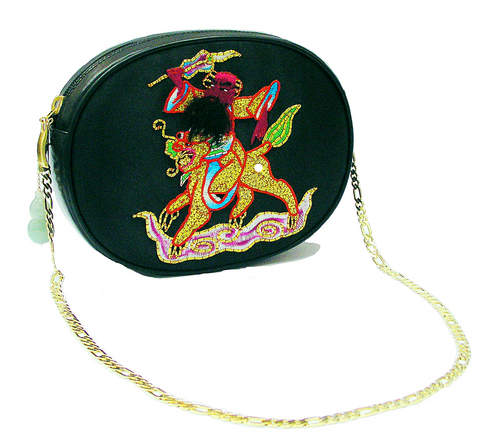
It is a festival color that symbolizes joy and happiness.
The color's code on the standard printing color chart is M100 and Y10, and it has a peachy pink tone. Shoutao (
To Chen Hsiu-huei (
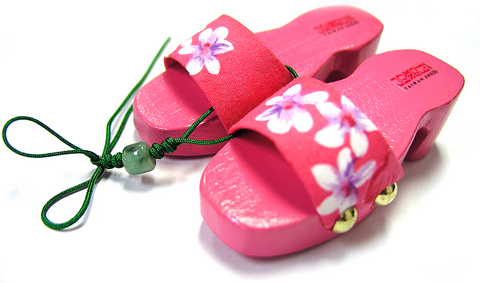
"My generation grew up impoverished. I remember when I was little, my mom would go to temples in plain clothes but she always insisted on wearing a dab of red on her lips and cheeks. So to me, the color represents hope in a time of scarcity," Chen said.
Taiwan Ang Co (
Now that baby boomers have grown up, their shared memories represent a sense of Taiwanese-ness. To people in their 40s and 50s, the color conjures up a smell, and images of family celebrations and festivities.
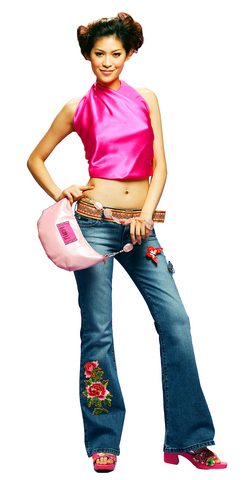
"The color is to Taiwan as the Christmas spirit is to Westerners," Lee said. Born and raised in an old and wealthy family in Keelung, Lee emigrated to Australia. To Lee, Taiwan Red captures the essence of Taiwan and helps the country gain international recognition.
As a designer and artist, Lee quickly answered the call from Tchen to build the country's international image through its cultural and creative industries.
Lee established her company Taiwan Ang in July and set up showrooms in the World Trade Center and at the Grand Hyatt in Taipei. She has since worked with several local artists and developed lines of products aiming to make Taiwan Ang a global brand name.
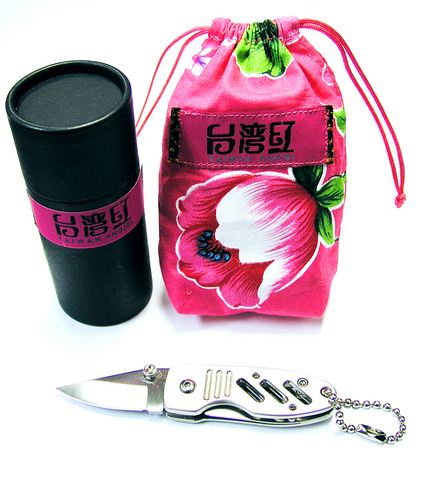
For designers Chien and Pan, traditional elements need to be cut, torn up and reconstructed to appeal to modern sensibilities. In their hands, the lines and shapes of peonies, traditional bridal cakes and red turtle cakes are transformed into asymmetrical patterns on flouncy dresses dripping down on the runway.
For Lee, the main task is to rediscover traditional handicrafts and Taiwanese cultural symbols and mold them into modern luxuries for international markets.
The exquisite woven cloth handmade by Yuli Taki (
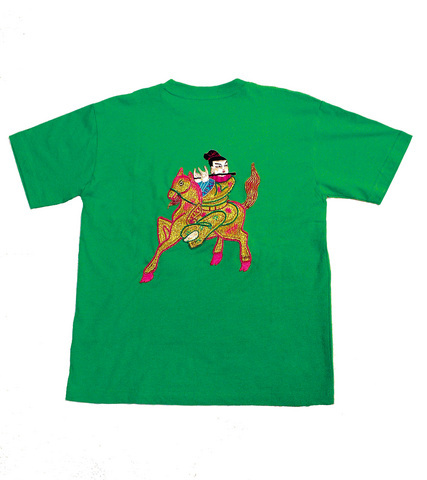
Traditional wooden clogs from Pei-mi Village (白米社區) are used as colorful decorations. Lee also designs several lines of accessories and clothes using the images of the eight immortals and ancient divinatory symbols.
The lines of the products are all designed to encompass the nuances of local culture and to represent the country's ethnical and cultural diversities.
"As a person who can cross between Taiwanese and Western cultures with ease, I am also familiar with the operation of branding on the global level. Tradition can be converted into innovation with the help of design concepts and modern techniques," Lee said.
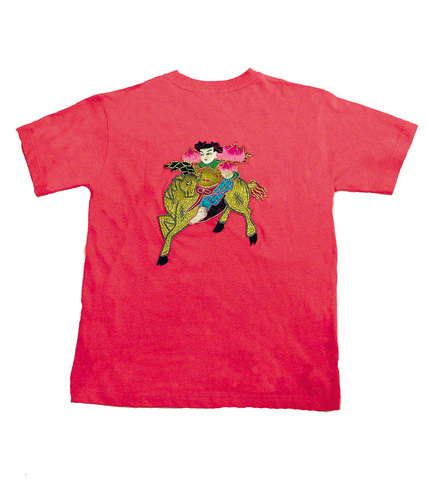
With more artists, designers and entrepreneurs joining forces to promote Taiwanese culture on the world stage, Taiwan is taking a big step forward to fostering a rich tradition of multiple identities that are recognized by the international community at large.
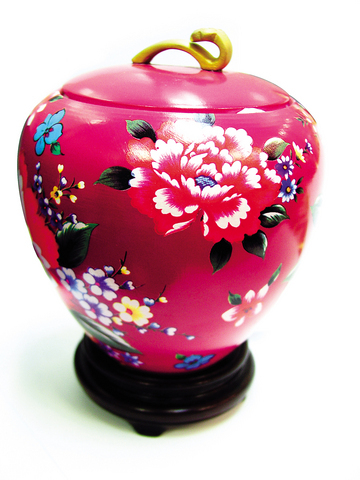
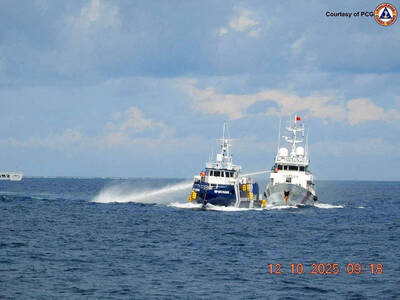
Many people noticed the flood of pro-China propaganda across a number of venues in recent weeks that looks like a coordinated assault on US Taiwan policy. It does look like an effort intended to influence the US before the meeting between US President Donald Trump and Chinese dictator Xi Jinping (習近平) over the weekend. Jennifer Kavanagh’s piece in the New York Times in September appears to be the opening strike of the current campaign. She followed up last week in the Lowy Interpreter, blaming the US for causing the PRC to escalate in the Philippines and Taiwan, saying that as
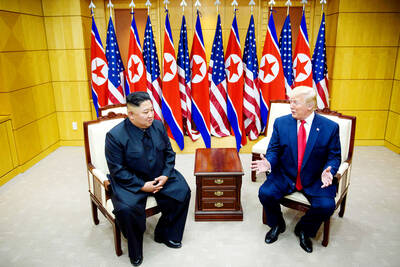
US President Donald Trump may have hoped for an impromptu talk with his old friend Kim Jong-un during a recent trip to Asia, but analysts say the increasingly emboldened North Korean despot had few good reasons to join the photo-op. Trump sent repeated overtures to Kim during his barnstorming tour of Asia, saying he was “100 percent” open to a meeting and even bucking decades of US policy by conceding that North Korea was “sort of a nuclear power.” But Pyongyang kept mum on the invitation, instead firing off missiles and sending its foreign minister to Russia and Belarus, with whom it
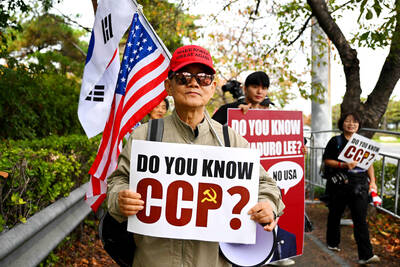
The Chinese Communist Party (CCP) has a dystopian, radical and dangerous conception of itself. Few are aware of this very fundamental difference between how they view power and how the rest of the world does. Even those of us who have lived in China sometimes fall back into the trap of viewing it through the lens of the power relationships common throughout the rest of the world, instead of understanding the CCP as it conceives of itself. Broadly speaking, the concepts of the people, race, culture, civilization, nation, government and religion are separate, though often overlapping and intertwined. A government
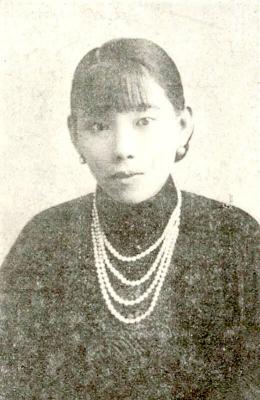
Nov. 3 to Nov. 9 In 1925, 18-year-old Huang Chin-chuan (黃金川) penned the following words: “When will the day of women’s equal rights arrive, so that my talents won’t drift away in the eastern stream?” These were the closing lines to her poem “Female Student” (女學生), which expressed her unwillingness to be confined to traditional female roles and her desire to study and explore the world. Born to a wealthy family on Nov. 5, 1907, Huang was able to study in Japan — a rare privilege for women in her time — and even made a name for herself in the